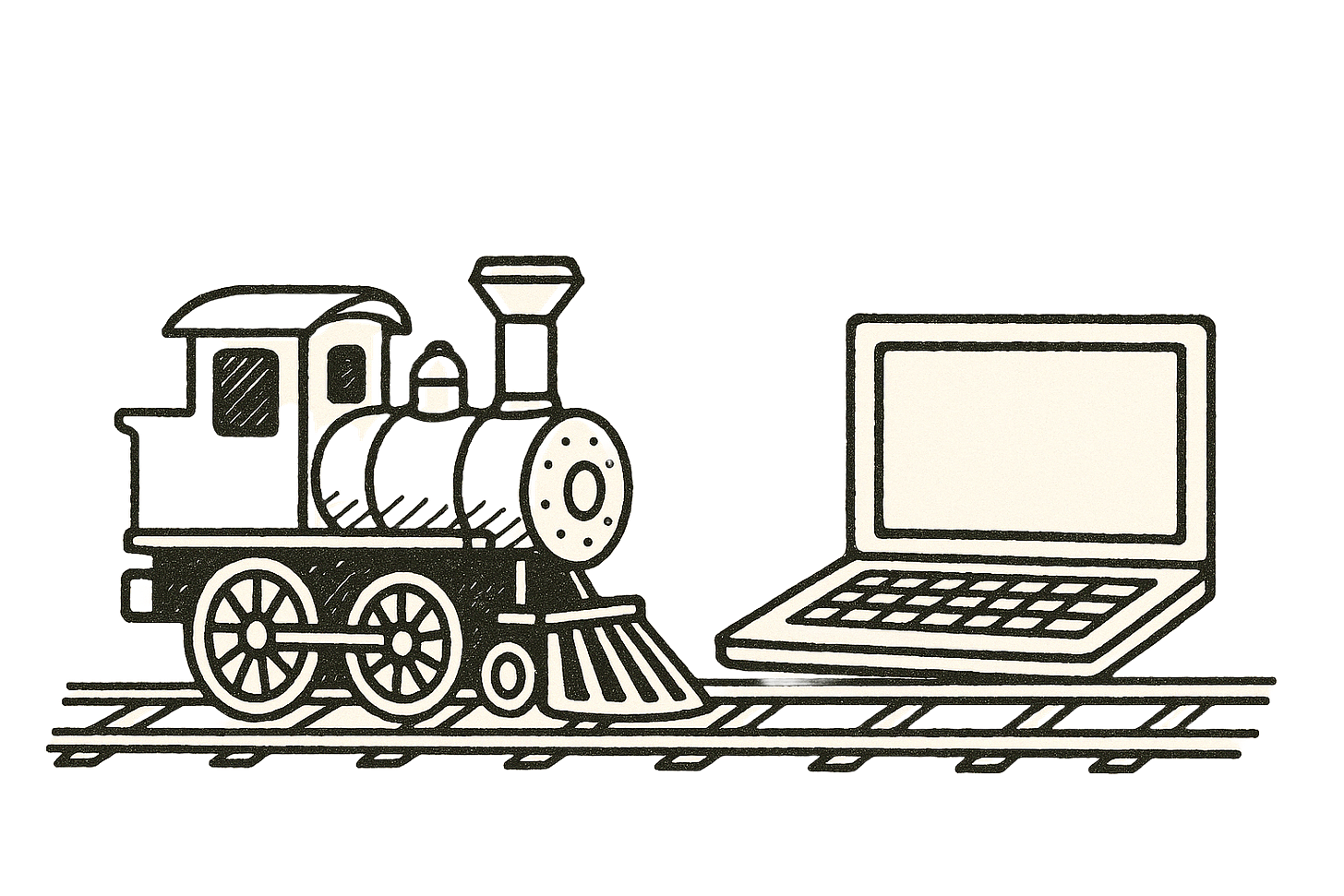Why Are Startups Growing Faster Than Ever Before?
T.C.R.E.A.M. (Transaction Costs Rule Everything Around Me)
Author’s note: Today is launch day for The Leverage! The first free post will come out on the 27th, but I wanted to give you a taste of what’s to come. In this deep dive, I examine one of the wildest facts of our time—AI startups are growing faster than any other companies in the history of capitalism (seriously, that is a real stat). Then, for paying subscribers, I suggest some new venture-scale startups that a strong founder could go build with these ideas. Enjoy, and see you Sunday the 27th, for the first edition of The Weekend Leverage, my free product that tells you the what and the why of tech market news.
In 1882, 36 years after its founding, the Pennsylvania Railroad became the world’s largest company. It operated thousands of miles of wood and steel track throughout New England—an opportunity so massive that its $2.2 billion in revenue (inflation adjusted to today) was equivalent to roughly 16% of the federal government’s budget at the time.
Fast forward 143 years to 2025, OpenAI hit $3.7 billion in annualized revenue, just 26 months after the launch of ChatGPT. By the end of 2025, it expects to roughly 3x its revenue to $12.7 billion. Let that marinate: The Pennsylvania Railroad, a company so powerful and novel that it seemed untouchable, was surpassed in just a few years by a couple hundred nerds typing into Macbooks.
OpenAI is not alone in this type of growth. Every morning, I open my inbox to a venture capitalist pitching me some new AI startup they’ve backed that is growing faster than any company in history. It’s become so commonplace that I’m a little numb to first-year $10 million earnings.
How the hell is this possible? And, perhaps more importantly, how can you, my beloved readers, use these same strategies to make millions?
The importance of transaction costs
There are some obvious reasons why these companies are growing so fast. Many of them are doing a spot-on impression of my crypto portfolio—they’re constantly in the red. Venture capitalists are heavily subsidizing these companies. For example, OpenAI doesn’t expect to be profitable until 2029 and plans to burn tens of billions of dollars before it gets there.
Another easy answer is that there is unprecedented demand from consumers and businesses for AI tools—people are willing to experiment at rates far above typical software tools.
But the easy answers are not where the big bucks lie. The larger and more subtle thread is that the internet has allowed more companies to operate on variable costs based on services rather than on fixed costs from hiring and large capital expenditures.
If you make a good Instagram Reel that advertises your product, Meta’s algorithm will automatically surface it to interested people. You don’t need someone to manually find these customers. If you know the exact amount you would pay to get a click on Google, one or two contractors can help you deploy tens of millions of dollars. Effective marketing—paid or not—can scale infinitely further than ever before.
The internet’s impact on these costs extends far beyond consumer attention marketplaces. Stripe allows you to turn on payments easily, AWS has on-tap computing infrastructure, Intercom can plug-in customer service, on and on. There are now large, scaled players that can substitute labor for almost every part of a company’s operations. When this is paired with the platform shift towards AI and the consumer attention that follows that shift, companies can go way, way bigger—Midjourney built its business with 40 employees and earned $200 million in revenue for 2023. Part of the reason they were able to keep their team so small is they hosted all their early users on Discord.
I’ve met with dozens of these companies now, and the story is the same. They make a great product and nail their positioning—and then they’re off to the races.
All of this is possible because of the internet. Eighty years ago, when Ronald Coase published his seminal paper The Nature of the Firm, businesses operated far less efficiently. At the time, Coase wrestled with a fundamental problem: In an efficient market, it should be cheaper for a company to outsource the majority of its internal activities to specialized contractors than to do these things in-house. But the dilemma was that it wasn’t cheaper. Coase’s breakthrough was to focus on transaction costs—the costs associated with using the market for production and exchange. Whenever you pay for a large software contract, you’re also paying for the cost of contract negotiations, data transfers, and enough paperwork to make your eyes bleed.
In a market, each transaction between independent parties occurs via contracts. Each of these contracts incurs its own costs. Within a firm, managers or founders coordinate these transactions, which reduces the necessity for multiple individual contracts. Coase says that’s why firms exist. They lower these transaction costs, which are much more expensive for independent parties.
Ultimately, the scale and boundaries of a firm depend on the relationship between the internal costs of organizing additional transactions and the costs of executing those same transactions through the open market.
Coase likely never would’ve predicted how far transaction costs could fall. The last 50 years of knowledge work, from Apple II’s to smartphones, pushed the cost curve ever lower. It is easier to coordinate people over email than how the railroad companies did it, by sending an envelope via horse and buggy or telegraph. OpenAI has less transaction costs in every part of its business than the average railroad company did—it uses cloud services, deploys AI-powered customer service, and offers self-serve APIs. It can become dramatically larger than those yesteryear giants, and at a much faster rate.
The most interesting thing
You’ll notice something funny—none of these growth tactics are all that reliant on LLM technology. They mostly rely on the growth hacking and sales techniques we’ve used for the past decade, amplified by the greatest market tailwind since the 2008 launch of the iPhone app store.
The strategy that has been neglected, one that is more economically valuable but also rarer, is using LLMs themselves to materially reduce transaction costs. There are five ways firms communicate with external parties:
1) Voice
2) Text in contracts, emails, or Slack messages
3) User interfaces where customers click buttons in applications
4) APIs (code)
LLMs can automate all four of these things:
1) Voice modalities can be completely replaced by AI. When implemented correctly, robocallers can be more popular than human voices. A Zendesk study from last year showed 51% of users preferred the robot. Pairing the voice modes with humans is also incredibly useful. Meetings can be transcribed and annotated by the AI. Essentially, an AI can reduce friction in any moment you’ve had to talk to someone to buy something.
2) LLMs excel at understanding text. They can pull out context across tens of thousands of emails, contracts, DMs. They can even transform text and data so you can do bulk transfers of data from one software service to another.
3) AI agents can operate web browsers and press buttons on behalf of their owners.
4) Code is the most obvious one. Point an LLM at an API, upload the developer docs, and presto! You have a service that can interact with another company’s database.
That means that many of the competitive advantages that were reliable for so many years might erode quickly. Here are the types of startups I’d like to see built with this new opportunity, and how I believe founders might approach this challenge.
Startup opportunities I’m excited about
Keep reading with a 7-day free trial
Subscribe to The Leverage to keep reading this post and get 7 days of free access to the full post archives.





